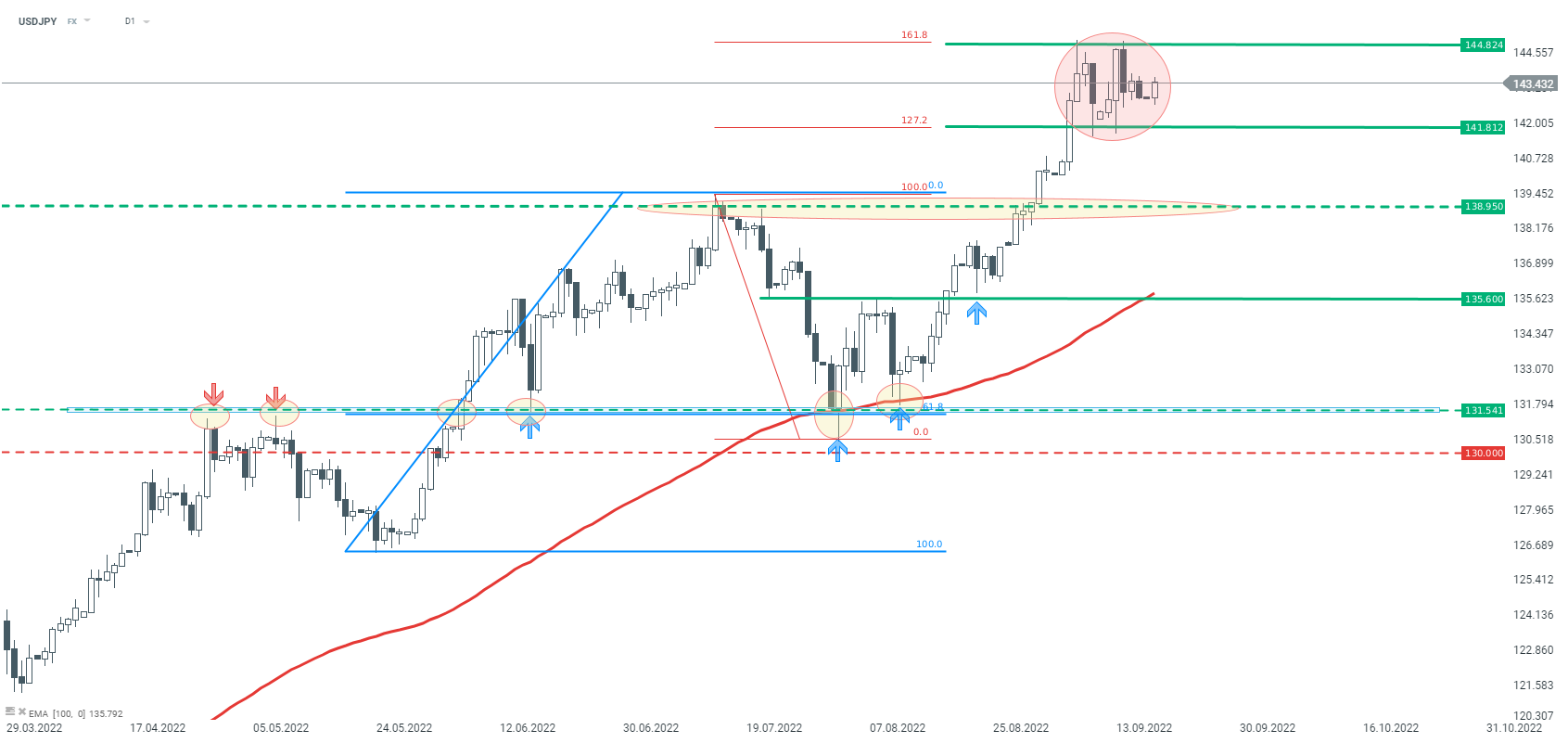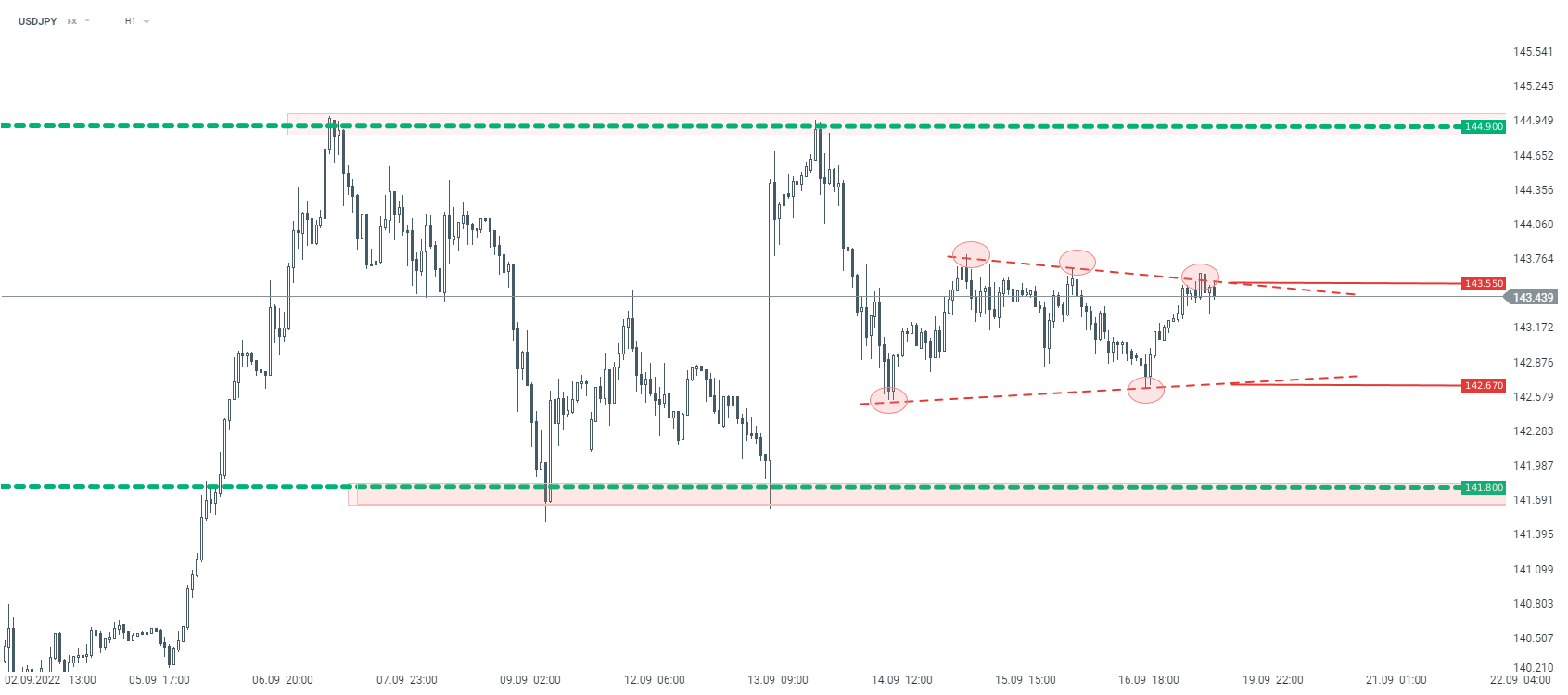USDJPY quotes are in a long-term uptrend. In the past month, the price rebounded, as we expected, from the support zone in the area of the 131.50 level, and then soared, setting new peaks. In line with previous analyses, the quotation reached the outer measures of 127.2% and 161.8% of the last correction. Nevertheless, looking at the D1 interval, we can see that the trend has slowed down slightly, and the currency pair has fallen into a local consolidation, between the indicated Fibo external intentions. While the main trend remains unchanged upward, consolidation at current levels, or the occurrence of a correction - is possible. A larger movement should be expected only after overcoming the support zone at 141.80, or the resistance zone at 144.80.

USDJPY interval D1. Source: xStation
Looking at the lower time frame - H1, on the other hand, in the short term the focus should be on two levels - 143.55 and 142.67, which are the upper and lower limits of the local triangle formation (marked with red dotted lines). If one of them is defeated, a larger movement could be generated. If a downward breakout occurs, the move could reach the support zone at 141.80. On the other hand, in case of an upward breakout, the target for buyers could become the zone at 144.90.

USDJPY H1 interval. Source: xStation5
⏬EURUSD the lowest in 3 months
Chart of the day - EURUSD (31.10.2025)
BREAKING: Eurozone Preliminary CPI in line with expectations
BREAKING: France inflation shows mixed results. EUR/USD shows no significant reaction.


